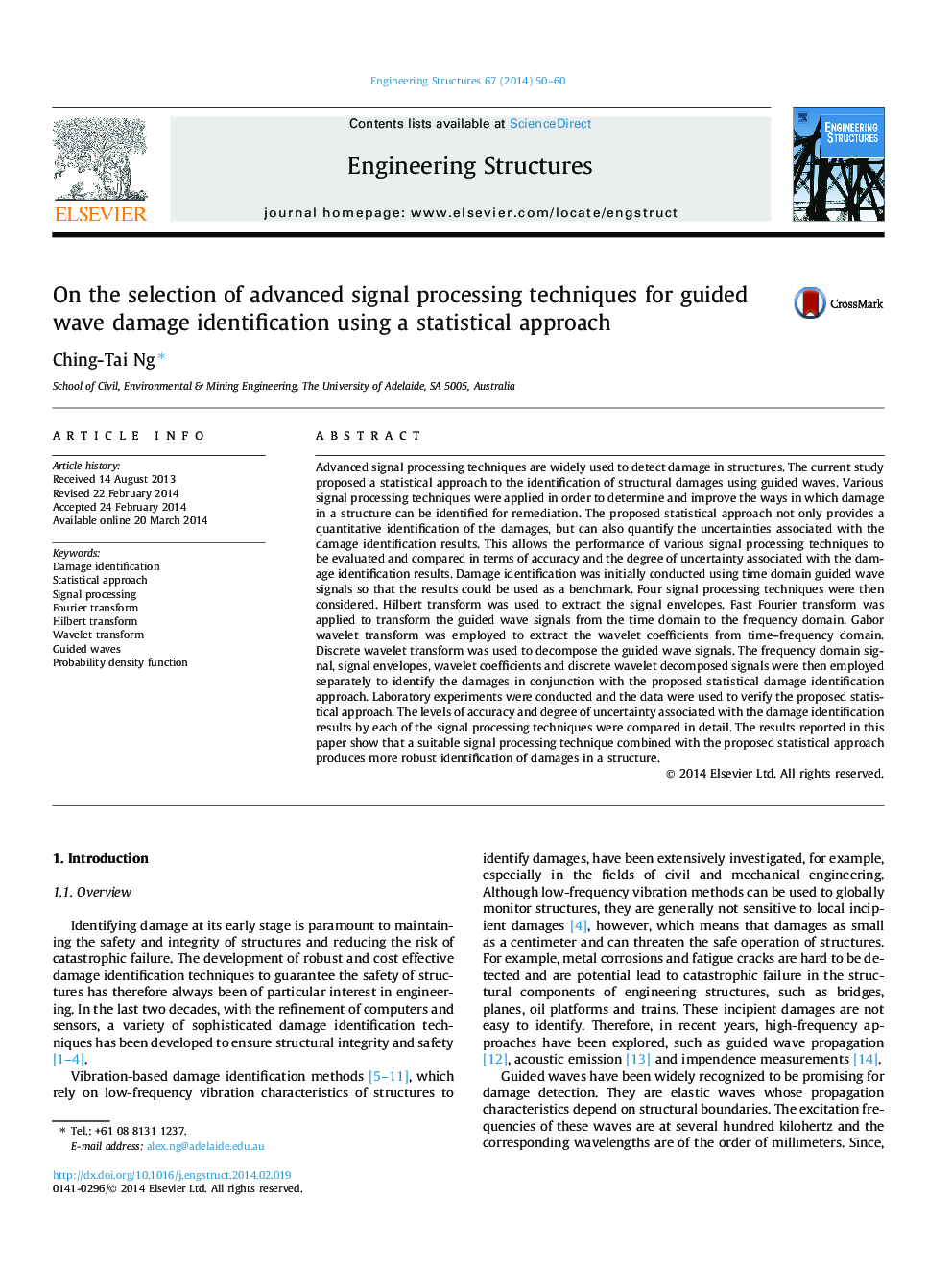| Article ID | Journal | Published Year | Pages | File Type |
|---|---|---|---|---|
| 266810 | Engineering Structures | 2014 | 11 Pages |
•A computational efficient and robust statistical approach is proposed.•Provide quantitative identification of damages and uncertainties quantification.•Advanced signal processing techniques are used to enhance the damage identification.•Performance of signal processing techniques are compared and discussed in detail.•Actual guided wave signals measured in experiments are used in the study.
Advanced signal processing techniques are widely used to detect damage in structures. The current study proposed a statistical approach to the identification of structural damages using guided waves. Various signal processing techniques were applied in order to determine and improve the ways in which damage in a structure can be identified for remediation. The proposed statistical approach not only provides a quantitative identification of the damages, but can also quantify the uncertainties associated with the damage identification results. This allows the performance of various signal processing techniques to be evaluated and compared in terms of accuracy and the degree of uncertainty associated with the damage identification results. Damage identification was initially conducted using time domain guided wave signals so that the results could be used as a benchmark. Four signal processing techniques were then considered. Hilbert transform was used to extract the signal envelopes. Fast Fourier transform was applied to transform the guided wave signals from the time domain to the frequency domain. Gabor wavelet transform was employed to extract the wavelet coefficients from time–frequency domain. Discrete wavelet transform was used to decompose the guided wave signals. The frequency domain signal, signal envelopes, wavelet coefficients and discrete wavelet decomposed signals were then employed separately to identify the damages in conjunction with the proposed statistical damage identification approach. Laboratory experiments were conducted and the data were used to verify the proposed statistical approach. The levels of accuracy and degree of uncertainty associated with the damage identification results by each of the signal processing techniques were compared in detail. The results reported in this paper show that a suitable signal processing technique combined with the proposed statistical approach produces more robust identification of damages in a structure.
